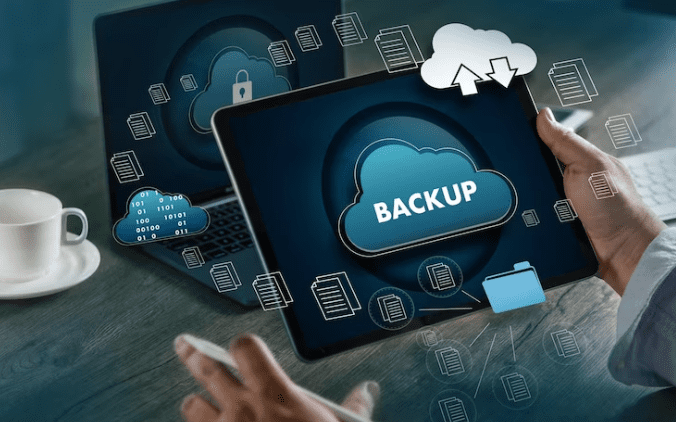In the Kubernetes era, safeguarding critical information with robust Kubernetes Backup and Restore strategies has become an imperative. It is not a nice to have anymore, and we cannot afford to ignore it. Yet, IT organizations consider disaster recovery for Kubernetes at the later stages of deployment. The belief being that traditional manual people intensive methods can be used. The reality is that with Kubernetes feature rich flexibility comes complexity, (great article about this subject was recently published in THENewStack Tim Hockin: Kubernetes Needs a Complexity Budget) which renders traditional approaches inadequate, leading to inefficiencies and potentially disastrous scenarios. In response to this pressing challenge, I would like to present to you these Best Practices in “Kubernetes Backup and Restore: 7 Definitive Ways to Fortify Your Future” – not merely a lucky number, but a meticulously curated set of practices designed to eliminate reliance on luck altogether.
Consider This:
-
IBM’s latest Cost of a Data Breach report discovered that, in 2023, the average cost of a data breach globally reached an all-time high of $4.45 million. This figure represents a 2.3% increase from the previous year and a 15.3% rise from 2020.
-
93% of companies that lost their data center for 10 days or more due to a disaster, filed for bankruptcy within one year of the disaster. (National Archives & Records Administration in Washington)
-
50% of businesses that found themselves without data management for this same time period filed for bankruptcy immediately. (National Archives & Records Administration in Washington)
Now, armed with the urgency these statistics evoke, let’s delve into the strategies that fortify your Kubernetes environment against potential disasters.
#1: Understand What to Protect, Backup and Restore
Whether it is protecting Helm Charts, as to not brake the lifecycle management of Helm-based applications; or, protecting the configurations of Operators if they are not stored in GIT, Kubernetes backup and restore solutions need to have intimate understanding of data, metadata, and all objects associated with stateful applications. Why? Because time can be cost – according to this article downtime incidents in industries like Retail, Telecommunications, or Energy can incur losses between $1.1 million and $2.5 million per hour. Much like the article explains, and from our experience with customers, these outages can be attributed to the lack of environmental maintenance or other ecosystem issues.
#2 Know Your Users
#3: Regular Backups
According to Uptime Institute, 85% of human error outages stem from procedural lapses. This statistic demonstrates the need for regular backup. To ensure that backup and restore capabilities are executed in a timely fashion, establish a robust backup strategy leveraging automation where possible. And, reenforce this with policy-enabling tools to minimize the potential of human-based outages. Coupling technologies like Red Hat Ansible Automation Platform with Red Hat Advanced Cluster Management (RHACM) as shown in this Red Hat infographic or with Kubernetes projects like Kyverno are solid steps to resiliency.
Our Red Hat OpenShift Backup and Recovery platform ![]() Trilio OpenShift Backup is integrated with OpenShift and provides out of the box capabilities like support for Red Hat Advanced Cluster Management.
Trilio OpenShift Backup is integrated with OpenShift and provides out of the box capabilities like support for Red Hat Advanced Cluster Management.
#4: Strong Encryption Posture
#5: Secure Your Backups
Embrace an immutable backup strategy, where Kubernetes backups cannot be altered or deleted for a specified retention period. This approach enhances data integrity and security, providing a reliable and recoverable data state while offering an additional layer of defense against cyber threats. One of the most important practices that a backup vendor can provide is to make sure that immutable backups are configured with retention lock. Without this configuration, bad actors can attack backups by modifying large amounts of data. This can result in swelling backup pools and the deletion of all existing backups to free up space.
To combat this,Trilio will calculate a new retention policy based on the scheduling policy, retention policy, and maximum length of incremental backups, and then validates it against the default retention policy set on the bucket to ensure Trilio will be able to lifecycle the backups correctly while maintaining SLAs and overall compliance. This calculated new retention policy is then applied to all the backups. Additionally, as customers and prospects continue to look for operational efficiencies while delivering more robust feature sets, we have seen the need to eliminate the request for dedicated and sized immutable real estate in storage environments. Rather, determine you want immutable backups and start protecting points-in-time without the fear of running out of pre-defined allocated storage for immutability.
#6: Ensure Recoverability
#7 Be Prepared, Be Portable
Conclusion
Data Protection for Kubernetes
In conclusion, Kubernetes back up and restore demands technology developed specifically for Kubernetes. By adhering to these seven best practices you create operational resiliency. You not only mitigate the risks but position yourself to handle unforeseen events with confidence. Remember, a robust Kubernetes backup and restore strategy is not just a best practice – it is an absolute necessity in today’s dynamic landscape!

